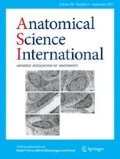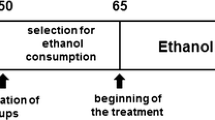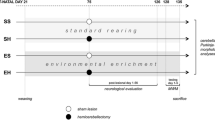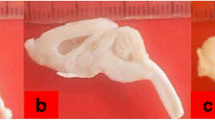Abstract
Cerebellar abnormalities are commonly associated with hydrocephalus. However, the effect of hydrocephalus on the otherwise normal cerebellum has been largely neglected. This study assesses the morphological changes in the Purkinje cells in relation to cerebellar dysfunction observed in juvenile hydrocephalic rats. Fifty-five three-week old albino Wistar rats were used, hydrocephalus was induced by intracisternal injection of kaolin (n = 35) and others served as controls (n = 20). Body weight measurements, hanging wire, negative geotaxis, and open field tests were carried out at the onset and then weekly for 4 weeks, rats were killed, and their cerebella processed for Hematoxylin and Eosin, Cresyl violet and Golgi staining. Qualitative and quantitative studies were carried out; quantitative data were analyzed using two-way ANOVA and independent T tests at p < 0.05. Hydrocephalic rats weighed less than controls (p = 0.0247) but their cerebellar weights were comparable. The hydrocephalic rats had a consistently shorter latency to fall in the hanging wire test (F(4,112) = 18.63; p < 0.0001), longer latency to turn in the negative geotaxis test (F(4,112) = 22.2; p < 0.0001), and decreased horizontal (F(4,112) = 4.172, p = 0.0035) and vertical movements (F(4,112) = 4.397; p = 0.0024) in the open field test than controls throughout the 4 weeks post-induction. Cellular compression in the granular layer, swelling of Purkinje cells with vacuolations, reduced dendritic arborization and increased number of pyknotic Purkinje cells were observed in hydrocephalic rats. Hydrocephalus caused functional and morphological changes in the cerebellar cortex. Purkinje cell loss, a major pathological feature of hydrocephalus, may be responsible for some of the motor deficits observed in this condition.






Similar content being viewed by others
References
D’Angelo E, Casali S (2012) Seeking a unified framework for cerebellar function and dysfunction: from circuit operations to cognition. Front Neural Circuits 6:116
Del Bigio MR, Wilson MF, Enno T (2002) Chronic hydrocephalus in rats and humans: white matter loss and behavior changes. Ann Neurol 53:337–346
Del Bigio MR, Zhang YW (1998) Cell death, axonal damage, and cell birth in the immature rat brain following induction of hydrocephalus. Exp Neurol 154:157–169
Del Bigio MR (2010) Neuropathology and structural changes in hydrocephalus. Dev Disabil Res Rev 16:16–22
Dennis M, Salman MS, Juranek JM (2010) Cerebellar motor function in spina bifida meningomyelocele. Cerebellum 9:484–498. https://doi.org/10.1007/s12311-010-0191-8
Di Curzio DL, Buist RJ, Del Bigio MR (2013) Reduced sub-ventricular zone proliferation and white matter damage in Juvenile Ferrets with Kaolin induced hydrocephalus. Exp Neurol 248:112–128
Di Curzio DL, Turner-Brannen E, Del Bigio MR (2014) Oral antioxidant therapy for juvenile rats with kaolin-induced hydrocephalus. Fluids Barriers CNS 11:23
Dusart I, Flamant F (2012) Profound morphological and functional changes of rodent Purkinje cells between the first and the second postnatal weeks: a metamorphosis? Front Neuroanat. https://doi.org/10.3389/fnana.2012.00011
Eccles JC, Ito M, Szentágothai J (1967) Purkinje cells and their responses. The cerebellum as a neuronal machine. Springer-Verlag, New York, pp 71–92
Fan LW, Tien LT, Zheng B, Pang Y, Rhodes PG, Cai Z (2010) Interleukin-1beta-induced brain injury and neurobehavioral dysfunctions in juvenile rats can be attenuated by alpha-phenyl-n-tert-butyl-nitrone. Neuroscience 168(1):240–252. https://doi.org/10.1016/j.neuroscience.2010.03.024
Feyissa DD, Aher YD, Engidawork E, Höger H, Lubec G, Korz V (2017) Individual differences in male rats in a behavioral test battery: a multivariate statistical approach. Front Behav Neurosci 11:26. https://doi.org/10.3389/fnbeh.2017.00026
Fukumizu M, Takashima S, Becker LE (1995) Neonatal posthemorrhagic hydrocephalus: neuropathologic and immunohistochemical studies. Pediatr Neurol 13(3):230–234
Glickstein M, Doron K (2008) Cerebellum: connections and functions. Cerebellum 7(4):589–594
Hale PM, McAllister JP II, Katz SD, Wright LC, Lovely TJ, Miller DW, Wolfson BJ, Salotto AG, Shroff DV (1992) Improvement of cortical morphology in infantile hydrocephalic animals after ventriculoperitoneal shunt placement. Neurosurgery 31(6):1085–1096
Herrup K, Wilczynski SL (1982) Cerebellar cell degeneration in the leaner mutant mouse. Neuroscience 7(9):2185–2196
Jansone B, Dzirkale Z, Jekabsons K, Pilipenko V, Beitnere U, Mâgure I, Skumbiòð R, Klçtnieks U, Vanaga I, Muceniece R, Kluða V (2016) Spruce needle polyprenols protect against atorvastatin-induced muscle weakness and do not influence central nervous system functions in rats. Proc Latvian Acad Sci Section B 70(1):13–20
Jones HC, Bucknall RM, Harris NG (1991) The cerebral cortex in congenital hydrocephalus in the H-Tx rat: a quantitative light microscopic study. Acta Neuropathol 82(3):217–224. https://doi.org/10.1007/BF00294448
Khan OH, Enno TL, Del Bigio MR (2006) Brain damage in neonatal rats following kaolin induction of hydrocephalus. Exp Neurol 200(2):311–320
Lubics A, Reglodi D, Tamás A, Kiss P, Szalai M, Szalontay L, Lengvári I (2005) Neurological reflexes and early motor behavior in rats subjected to neonatal hypoxic-ischemic injury. Behav Brain Res 157(1):157–165
Martin JE, Sosa-Melgarejo JA, Swash M, Mather K, Leigh PN, Berry CL (1991) Purkinje cell toxicity of β-aminopropionitrile in the rat. Virchows Archiv A 419:403–408
Oliveira SA, Chuffa LG, Fioruci-Fontanelli BA et al (2014) Apoptosis of Purkinje and granular cells of the cerebellum following chronic ethanol intake. Cerebellum 13(6):728–738. https://doi.org/10.1007/s12311-014-0591-2
Olopade FE, Shokunbi MT, Sirén A (2012) The relationship between ventricular dilatation neuropathological and neurobehavioural changes in hydrocephalic rats. Fluids Barriers CNS 9:19
Osenbach RK, Menezes AH (1992) Diagnosis and management of the Dandy-Walker malformation: 30 years of experience. Pediatr Neurosurg 18:179–189. https://doi.org/10.1159/000120660
Palay SL, Chan-Palay V (1974) The Purkinje cell. Cerebellar cortex: cytology and organization. Springer-Verlag, Berlin, pp 11–62
Rodríguez-Fanjul J, Durán Fernández-Feijóo C, Lopez-Abad M, Lopez Ramos MG, Balada Caballé R, Alcántara-Horillo S, Camprubí Camprubí M (2017) Neuroprotection with hypothermia and allopurinol in an animal model of hypoxic-ischemic injury: Is it a gender question? PLoS ONE 12(9):e0184643. https://doi.org/10.1371/journal.pone.0184643
Rubin RC, Hochwald G, Liwnicz B, Tiell M, Mizutani H, Shulman K (1972) The effect of severe hydrocephalus on size and number of brain cells. Dev Med Child Neurol Suppl 27:117–120. https://doi.org/10.1111/j.1469-8749.1972.tb09783.x
Seibenhener ML, Wooten MC (2015) Use of the Open Field Maze to measure locomotor and anxiety-like behavior in mice. J Vis Exp 96:e52434. https://doi.org/10.3791/52434
Singh R, Prasad K, Kumar A, Misra A, Padmakumar K, Malaviya A (1988) Cerebellar ataxia in systemic lupus erythematosus: three case reports. Ann Rheum Dis 47(11):954–956
Stanford SC (2007) The Open Field Test: reinventing the wheel. J Psychopharmacol 21(2):134–135. https://doi.org/10.1177/0269881107073199
Strick PL, Dum RP, Fiez JA (2009) Cerebellum and non-motor function. Annu Rev Neurosci 32:413–434
Taveira KV, Carraro KT, Catalão CH, Lopes LS (2012) Morphological and morphometric analysis of the hippocampus in Wistar rats with experimental hydrocephalus. Pediatr Neurosurg 48(3):163–167. https://doi.org/10.1159/000345959
Tien RD, Ashdown BC (1992) Crossed cerebellar diaschisis and crossed cerebellar atrophy: correlation of MR findings, clinical symptoms, and supratentorial diseases in 26 patients. AJR Am J Roentgenol 158(5):1155–1159
Timmann D, Daum I (2007) Cerebellar contributions to cognitive functions: a progress report after two decades of research. Cerebellum 6(3):159–162. https://doi.org/10.1080/14734220701496448
Turgut M, Baka M, Uyanıkgil Y (2018) Melatonin attenuates histopathological changes in the hippocampus of infantile rats with kaolin-induced hydrocephalus. Pediatr Neurosurg 53(4):229–237
Uyanıkgil Y, Turgut M, Baka M (2017) Effects of melatonin on the cerebellum of infant rat following kaolin-induced hydrocephalus: a histochemical and immunohistochemical study. Cerebellum 16:142–150
Wallace K, Veerisetty S, Paul I, May W, Miguel-Hidalgo JJ, Bennett W (2010) Prenatal infection decreases calbindin, decreases Purkinje cell volume and density and produces long-term motor deficits in Sprague-Dawley rats. Dev Neurosci 32(4):302–312
Watanabe M, Miyajima M, Nakajima M et al (2012) Expression analysis of high mobility group box-1protein (HMGB-1) in the cerebral cortex, hippocampus, and cerebellum of the congenital hydrocephalus (H-Tx) rat. Acta Neurochir Suppl 113:91–96
Watanabe M, Miyajima M, Ogino I, Nakajima M, Arai H (2013) Cerebellar Purkinje cells exhibit increased expression of HMGB-1 and apoptosis in congenital hydrocephalic H-Tx rats. Neurosurgery 72(3):459–467. https://doi.org/10.1227/NEU.0b013e31827fcd83
Welsh JP, Yuen G, Placantonakis DG, Vu TQ, Haiss F, O'Hearn E, Molliver ME, Aicher SA (2002) Why do Purkinje cells die so easily after global brain ischemia? Aldolase C, EAAT4, and the cerebellar contribution to posthypoxic myoclonus. Adv Neurol 89:331–359
Williams MT, Braun AA, Amos-Kroohs RM, McAllister JP et al (2014) Kaolin-induced ventriculomegaly at weaning produces long term learning, memory and motor deficits in rats. Int J Dev Neurosci 35:7–15. https://doi.org/10.1016/j.ijdevneu.2014.02.002
Author information
Authors and Affiliations
Corresponding author
Ethics declarations
Conflict of interest
The authors declare that they have no conflict of interest.
Additional information
Publisher's Note
Springer Nature remains neutral with regard to jurisdictional claims in published maps and institutional affiliations.
Rights and permissions
About this article
Cite this article
Olopade, F.E., Femi-Akinlosotu, O., Adekanmbi, A.J. et al. Neurobehavioural changes and morphological study of cerebellar purkinje cells in kaolin induced hydrocephalus. Anat Sci Int 96, 87–96 (2021). https://doi.org/10.1007/s12565-020-00561-z
Received:
Accepted:
Published:
Issue Date:
DOI: https://doi.org/10.1007/s12565-020-00561-z




